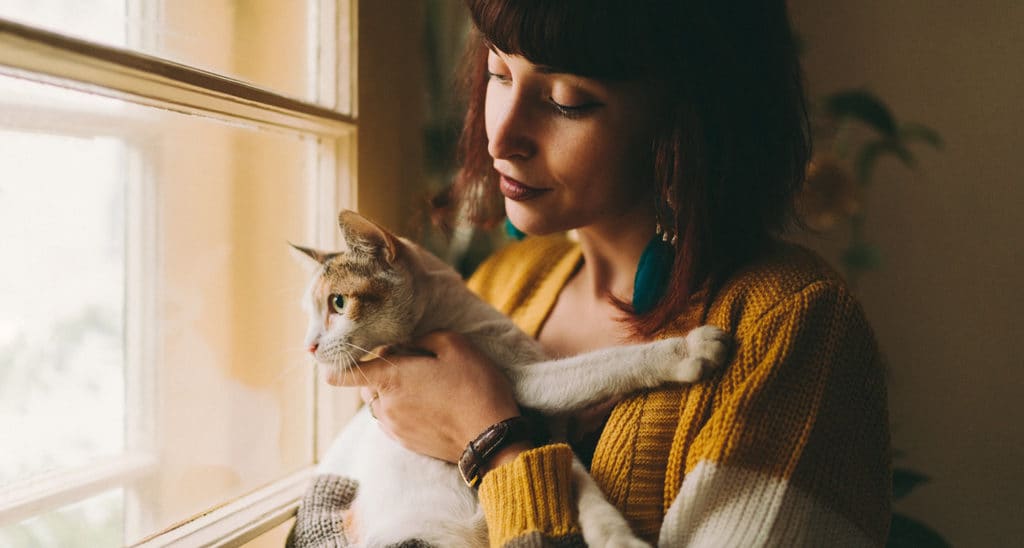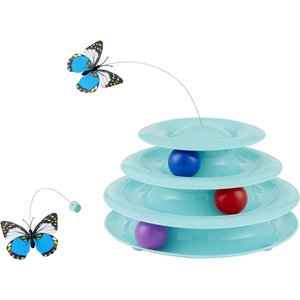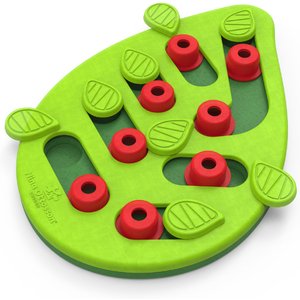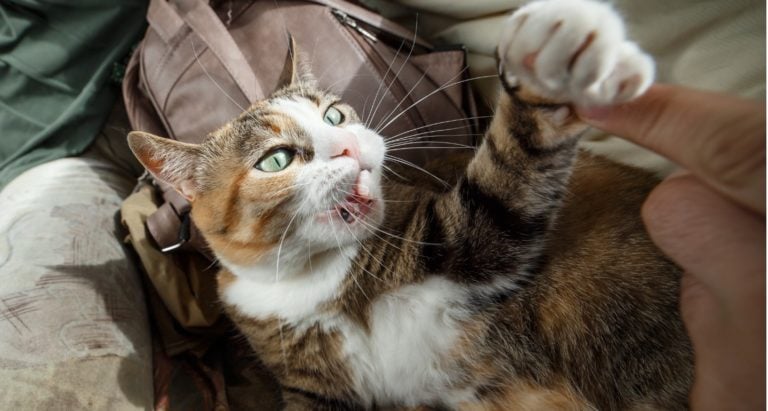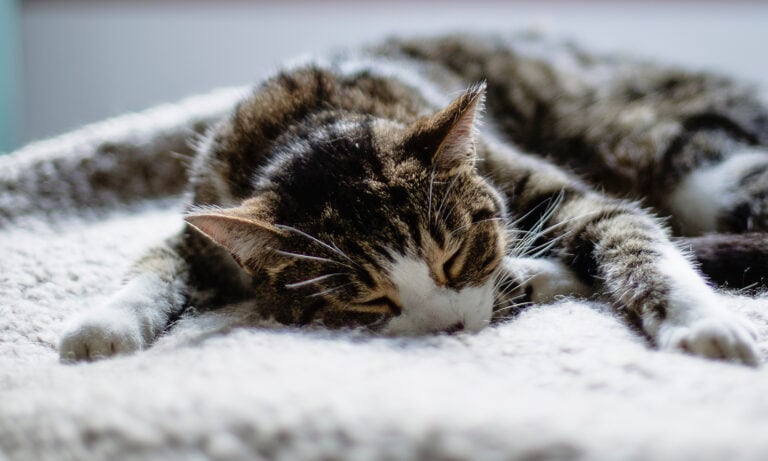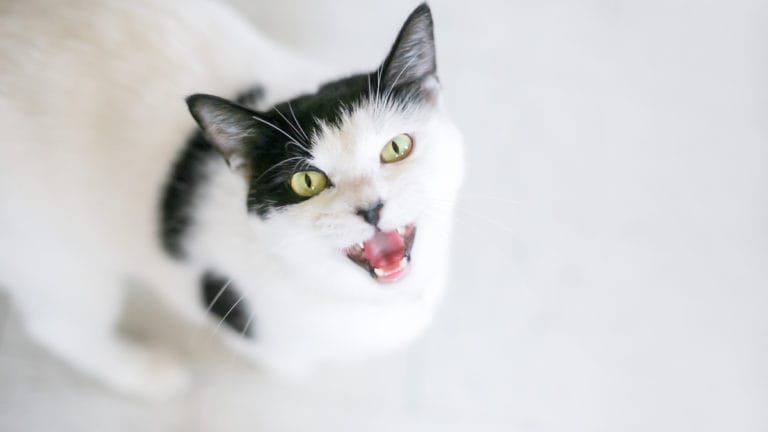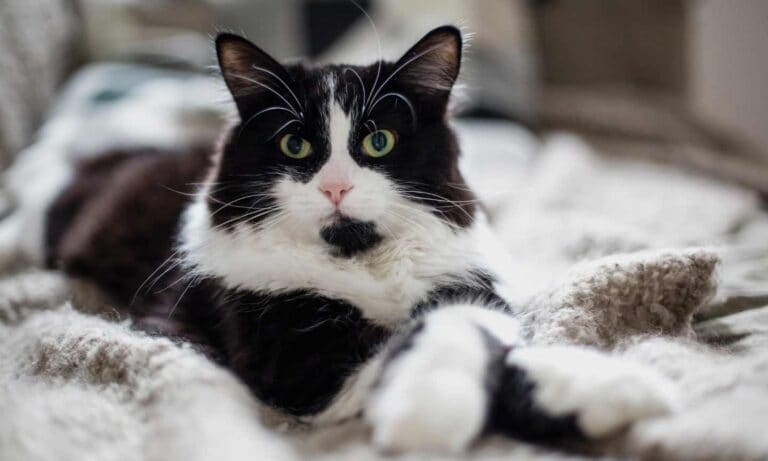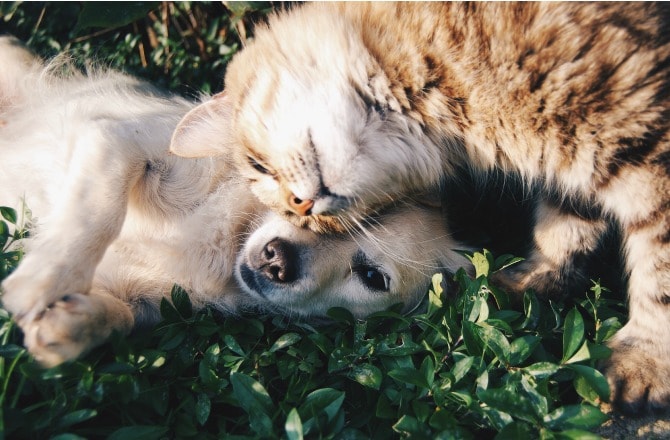Seeing our cats happy makes us happy, whether it’s hearing their sweet, rumbling purrs, watching them make biscuits or admiring them revel in playtime. We want to give our feline friends the best life—er, nine lives—possible. This means keeping them entertained, active and healthy.
We spoke to veterinary experts to get health and wellness tips for indoor cats, as well as to learn whether cats actually need to go outside, the benefits of keeping them inside and how to successfully transition your outdoor cat to an indoor cat.
In This Guide
8 Ways To Keep Your Indoor Cat Happy and Healthy
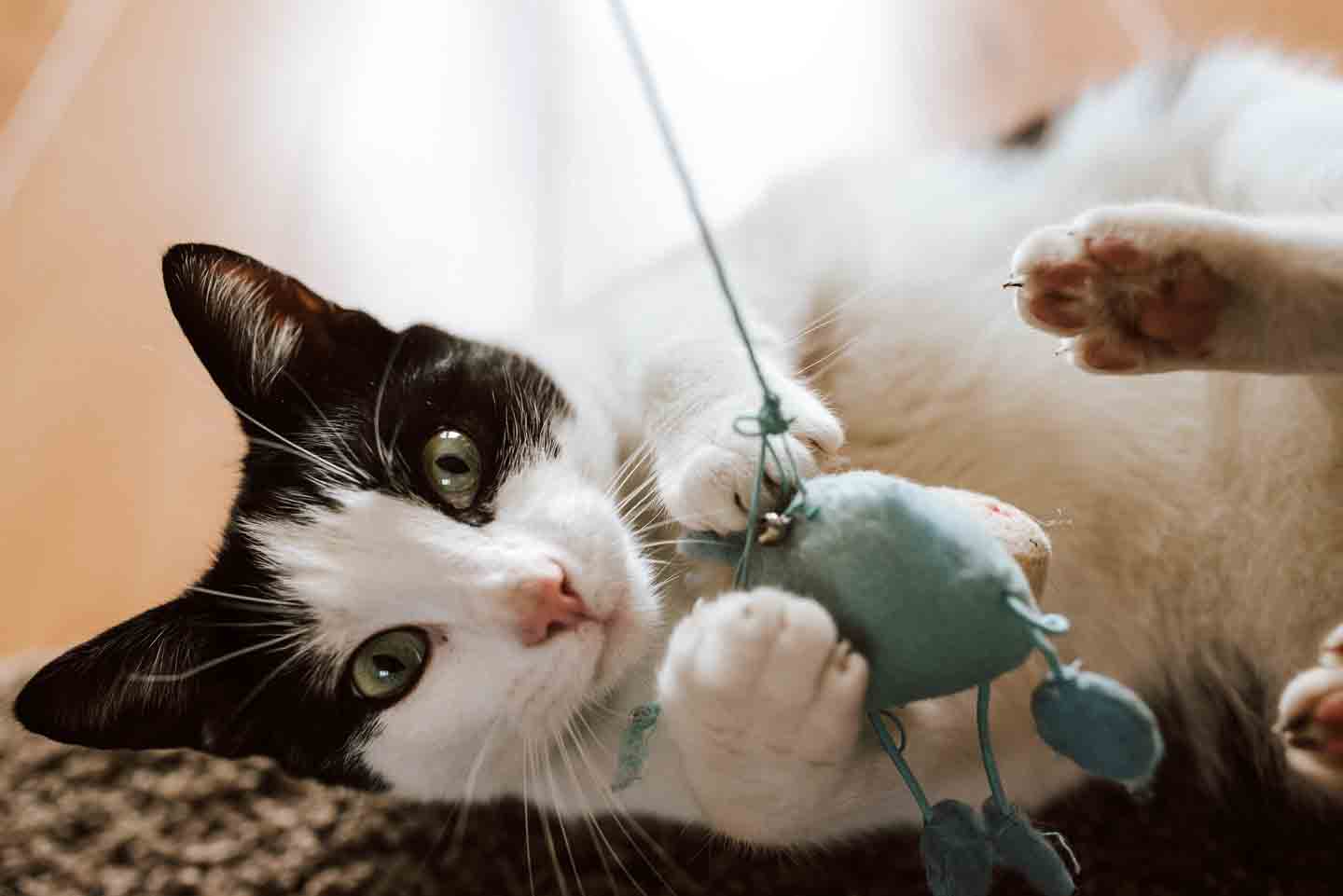
1Provide Indoor Enrichment
“Indoor enrichment for cats is crucial for their mental and physical well-being,” says Dr. Sabrina Kong, DVM, of Jules Veterinary Center in Tracy, California.
There are various ways to keep your kitty’s daily life fun and interesting so they can put both their mind and body to work. Try these tips from Dr. Kong and Dr. Sara de Wet, DVM, associate veterinarian at Scott’s Addition Animal Hospital in Richmond, Virginia:
- Set up scratching posts: These are must-haves because they allow cats to fulfill their natural scratching instincts, which are vital for claw health and stress relief, Dr. Kong says. These should be placed both horizontally and vertically.
- Provide a variety of toys: Dr. de Wet recommends having plenty of different toys that you can change out to keep your cat’s playtime exciting. Every cat is different in their toy preferences. Some cats can get a tremendous amount of entertainment out of DIY toys, like cardboard boxes, old socks stuffed with fabric and catnip, foil balls or even shoelaces to drag around. Dr. Kong says interactive cat toys, especially those that mimic prey movements and appeal to cats’ hunting instincts, are great for mental enrichment and physical activity.
- Place bird feeders near windows: “Setting up bird feeders by a window can offer visual stimulation, creating a cat TV that keeps them entertained for hours,” Dr. Kong says. You can also set up window perches so they can safely and comfortably watch what’s happening outside.
- Place food and water in different locations in the house: Dr. Kong says changing the location of their feeding can provide a change in scenery and add an element of novelty to their routine. Dr. de Wet recommends also hiding food or using puzzle feeders.
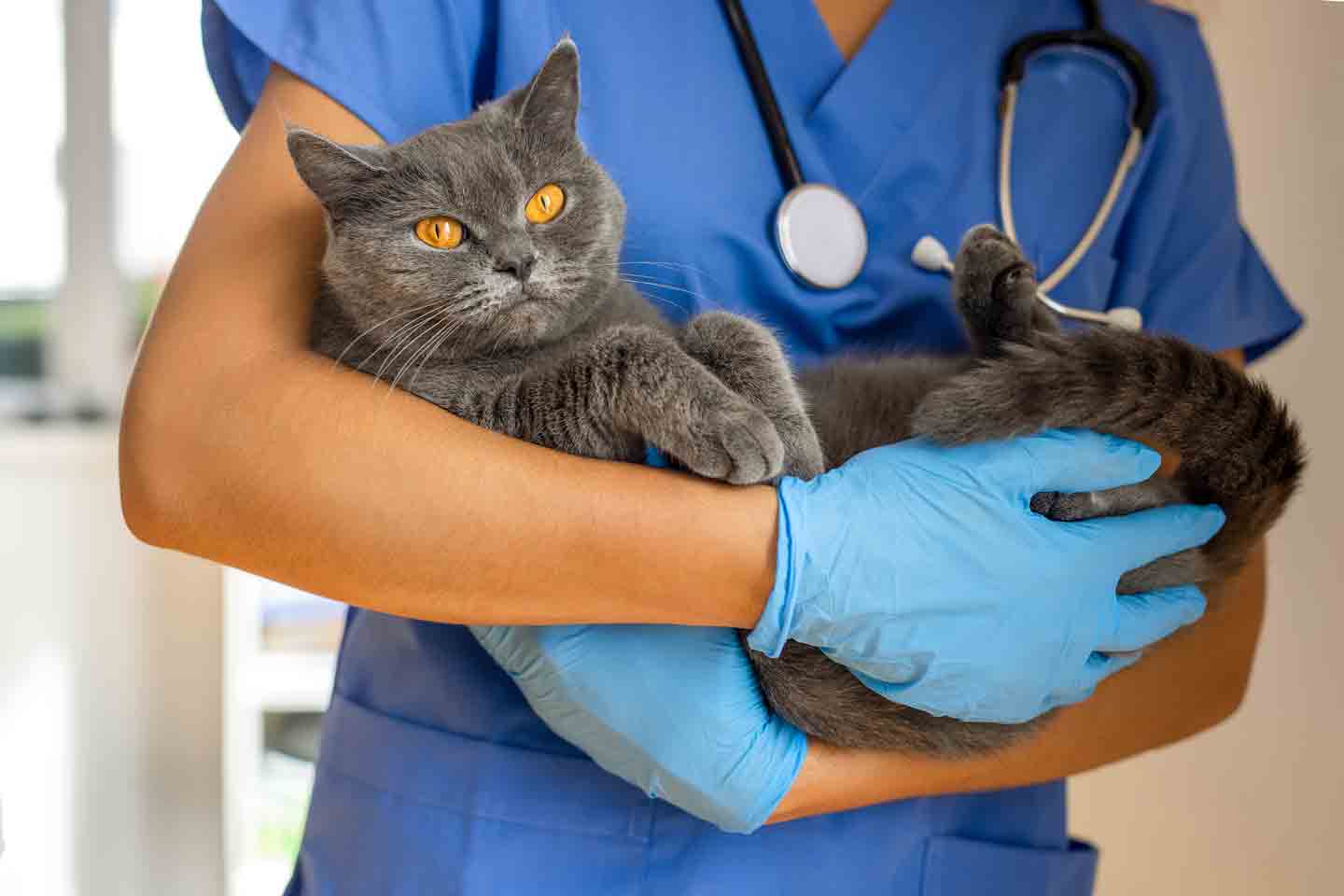
2Ensure They’re Up to Date on Vaccines
Vaccines are important for indoor cats, even if they’ve been indoors all their life. Dr. Kong recommends scheduling regular vet checkups—once a year for healthy adult cats and more frequently for kittens and senior cats.
“Vaccinations are crucial as they protect against diseases that can be brought into the home on clothing or by other pets,” Dr. Kong says. “Regular checkups also allow for early detection and management of potential health issues.”
The following common cat vaccinations can protect your cat from common and/or severe diseases:
- Rabies
- FVRCP (feline viral rhinotracheitis, feline calicivirus and feline panleukopenia)
- Feline immunodeficiency virus (FIV)
- Feline leukemia virus (FeLV)
- Chlamydophila felis
- Bordetella bronchiseptica
It’s also a good idea to get your indoor cat microchipped in case they ever find their way outside.
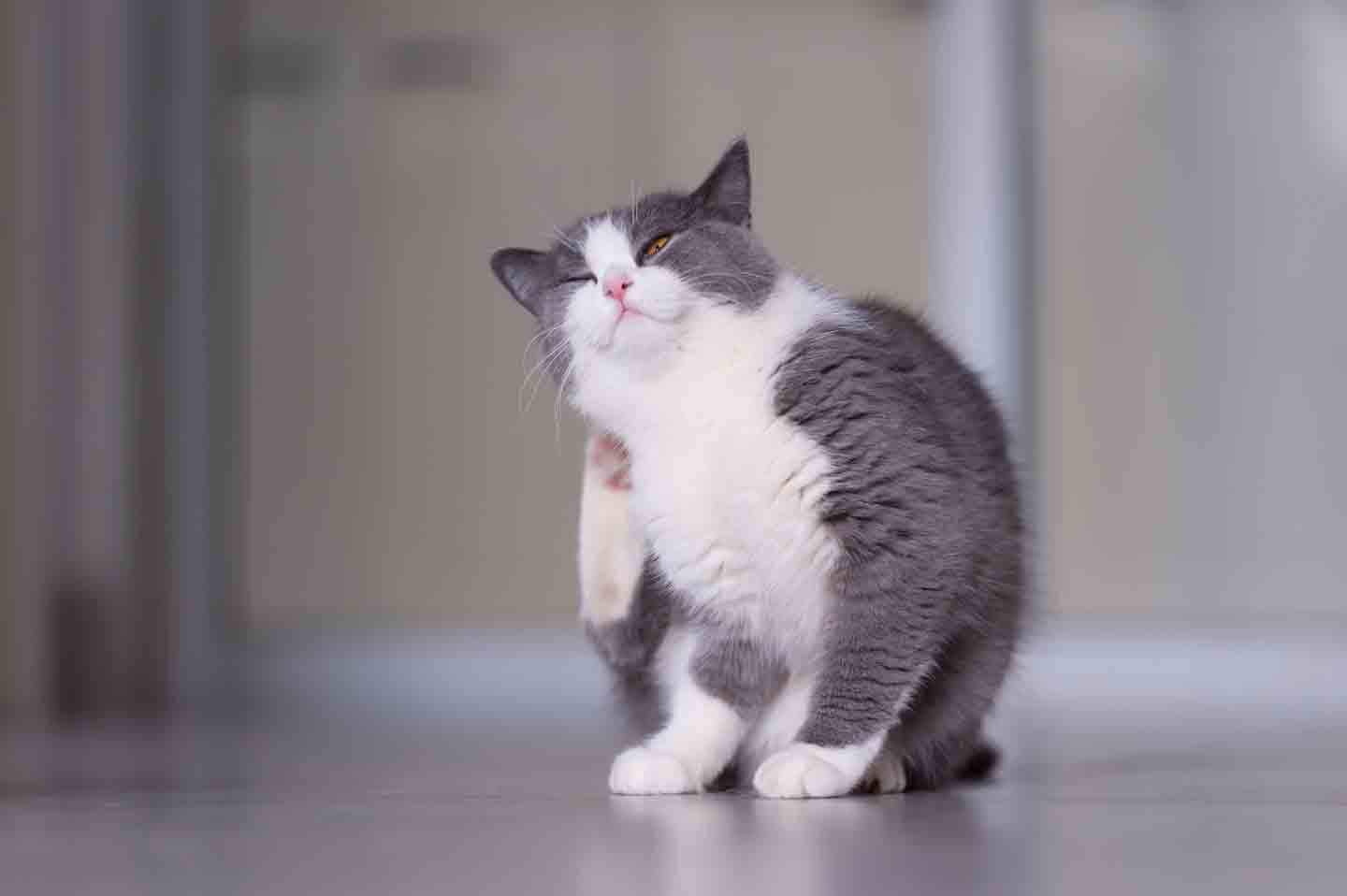
3Use Flea and Tick Protection
The sight of a single flea can send any pet parent into a panic—and rightfully so. Although the risk is lower for indoor cats to pick up fleas compared to outdoor cats, flea and tick prevention is still necessary.
These pesky parasites can make their way into our homes by hitchhiking on our clothing or other pets. Once they’ve made their way onto our precious cat, they can cause allergic reactions and even transmit diseases, Dr. Kong says.
By using flea and tick prevention, she adds that we can make sure our indoor cats can stay free from these pests and keep them healthy and comfortable. (And keep us from having to tackle the issue of a full-blown flea infestation.)
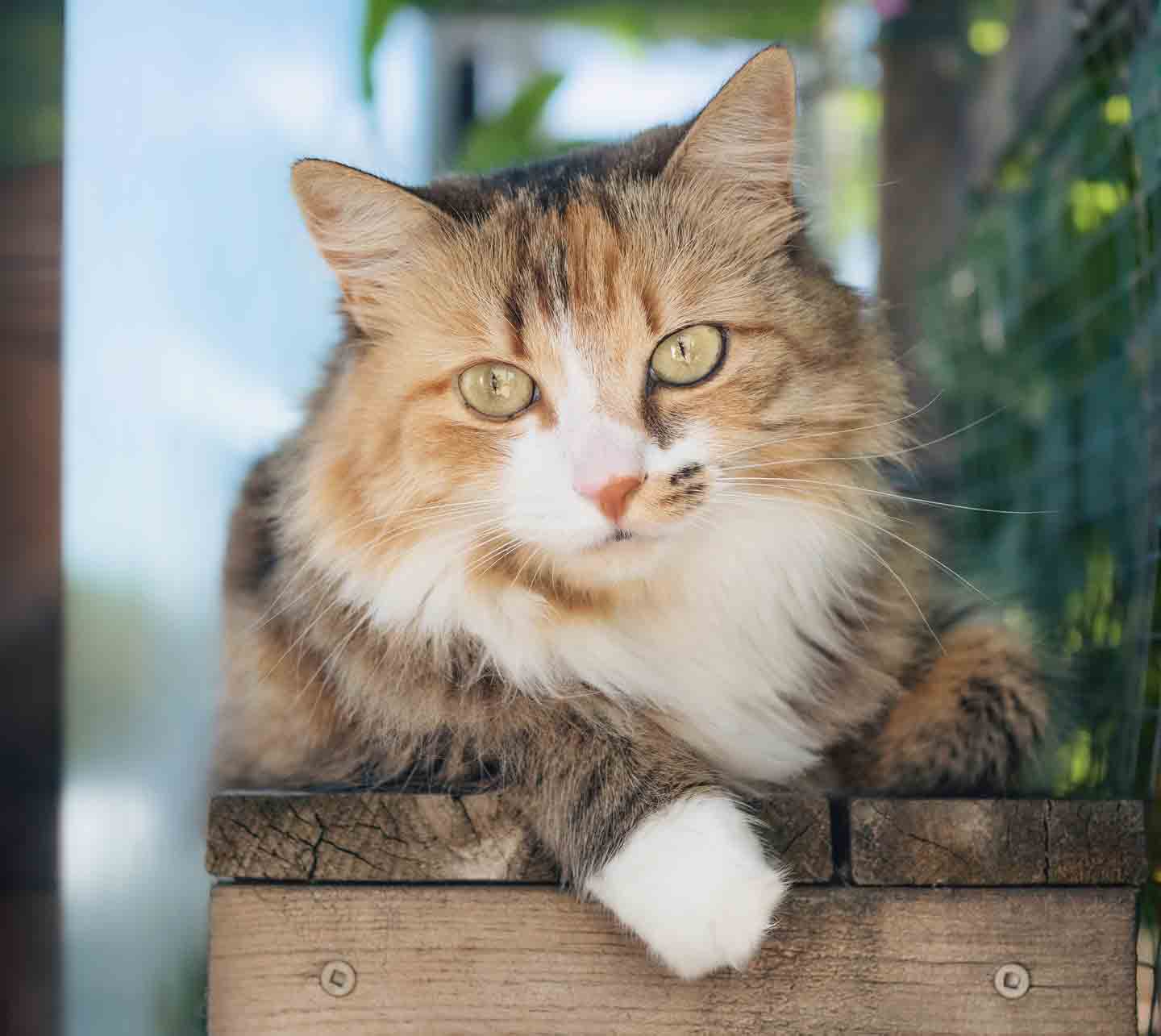
4Set Up a Cat Patio
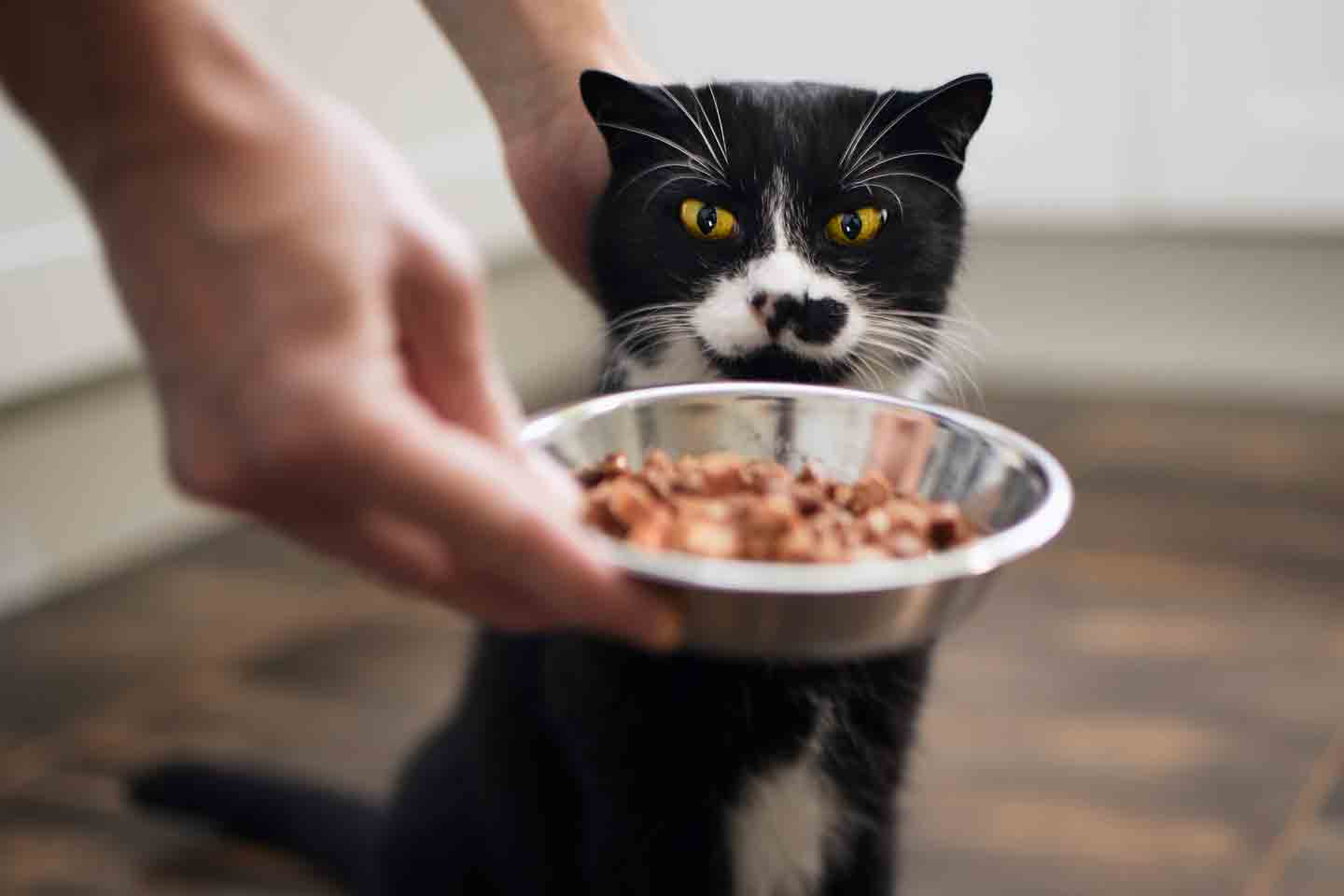
5Make Mealtime Fun
Disregard the rule of not playing with your food—for cats, the more enjoyable the experience, the better! Dr. Kong says making mealtime engaging and fun is another aspect of enriching an indoor cat’s life.
“Choosing the right food is essential for their health, and puzzle feeders are a great way to add mental stimulation to mealtime,” she explains. “Feeders encourage natural foraging behavior, making cats work a little for food and keeping their minds active.”
Ensuring optimal nutrition for your indoor cat is crucial, says Dr. Michelle Dulake, DVM, CEO of Fera Pet Organics in Los Angeles and associate veterinarian at Veterinary Medical Center in Studio City, California.
While many dry cat foods are good at delivering the essential vitamins, minerals and probiotics needed to promote a happy and healthy life, she explains that they often contain little beyond the essentials and can be high in carbs or lack flavor. Consider adding a meal topper to elevate your cat’s nutritional intake and make mealtime meow-worthy.
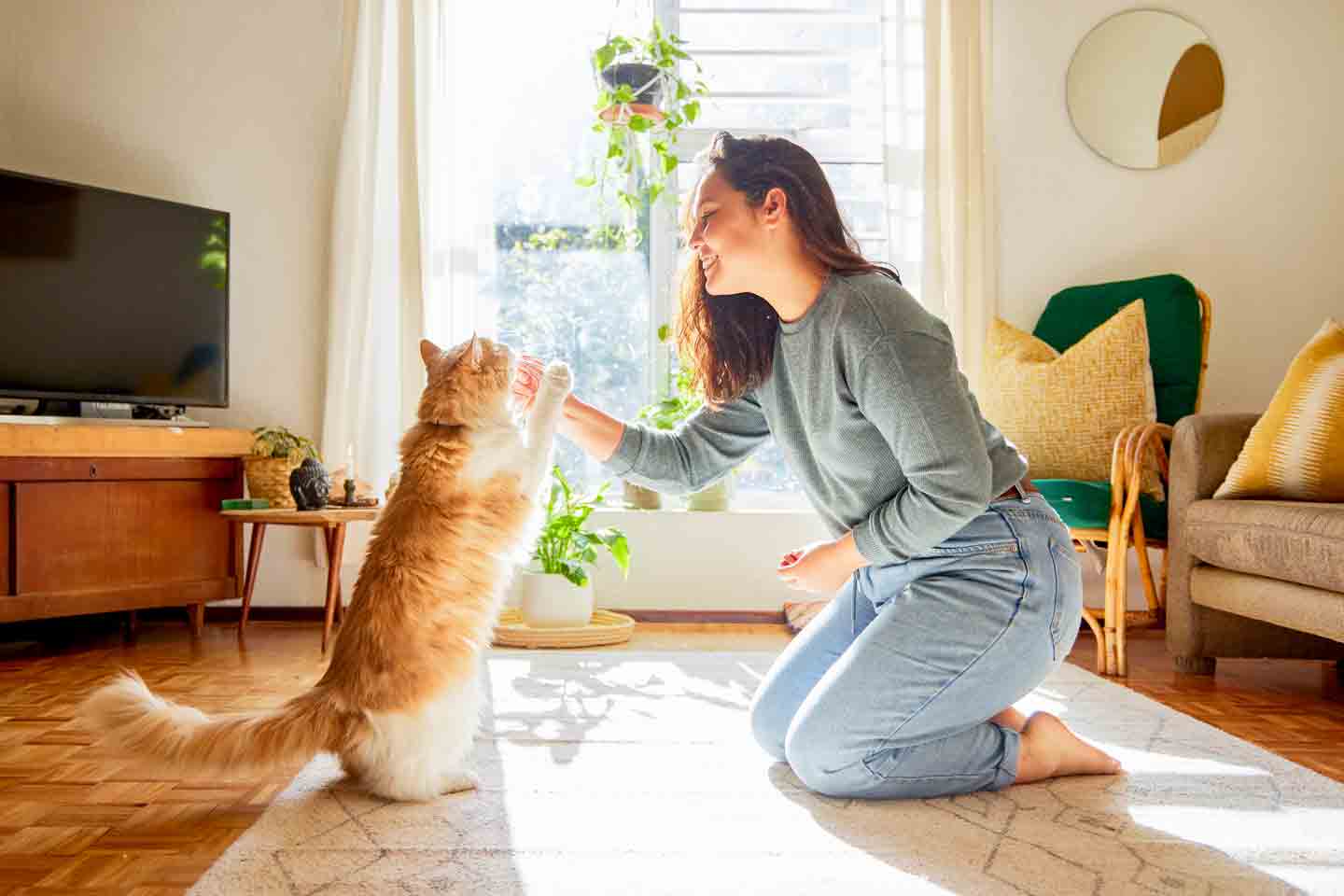
6 Clicker-train to Help Your Cat Learn Tricks
We often hear about clicker training for dogs. But cats can be trained, too! (Who said cats can’t—or more like, won’t—learn tricks?)
With a clicker and your cat’s favorite high-reward treats, you can train them to do just about anything, from giving high-fives to getting down from the counter. This not only helps create a happy household by encouraging positive behaviors, but it also keeps cats sharp and engaged.
Dedicate 5-15 minutes for each training session. With lots of patience, praise and treats, you can discover how much your cat can learn!
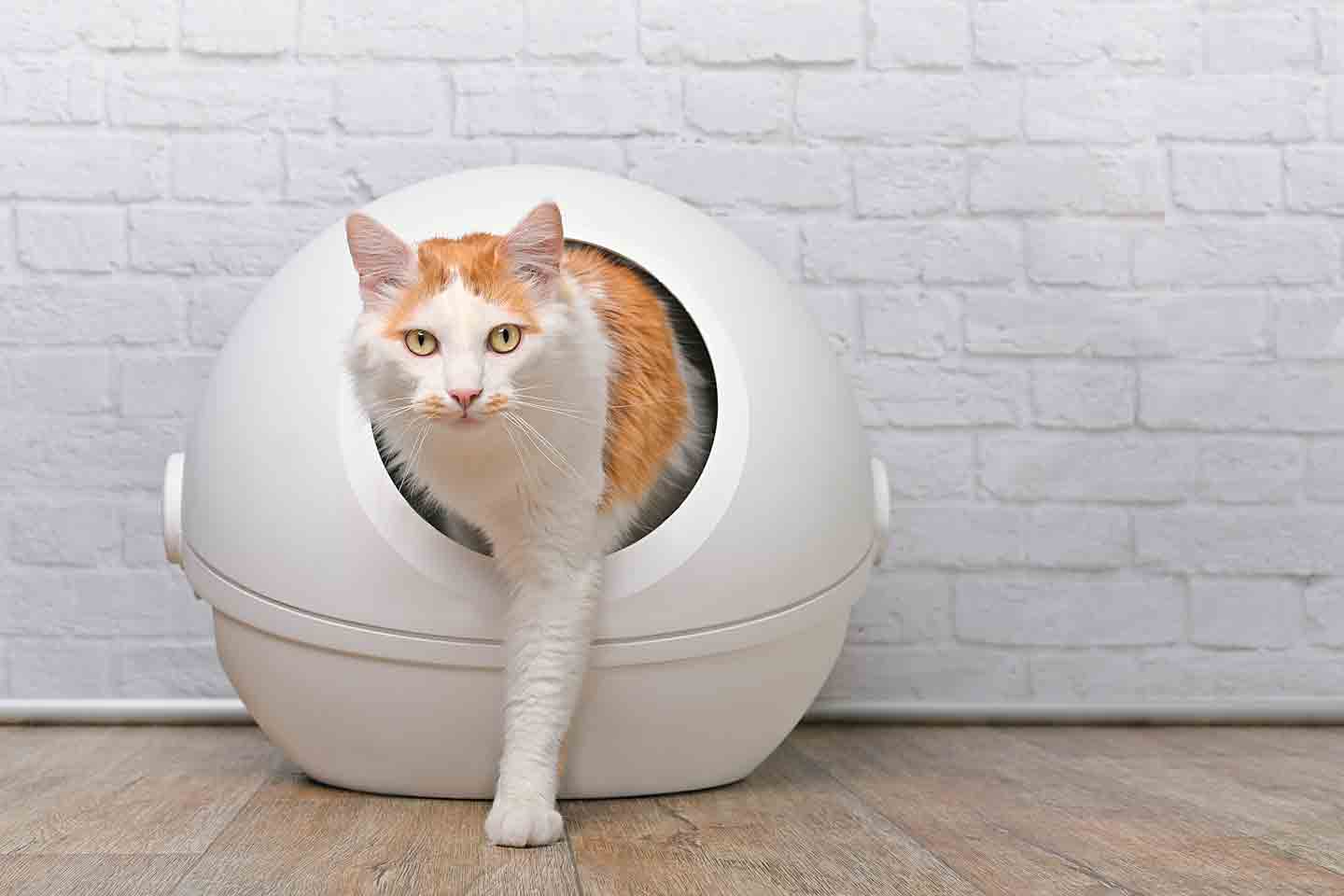
7Maintain Their Litter Box
Is this the most glamorous part of being a cat parent? Not so much. However, an appropriate cat litter box placement with regular maintenance plays a role in keeping our feline friends happy. If a litter tray is in a less-than-favorable spot or too dirty for a cat’s liking, they may choose to do their business elsewhere.
Though there is some evidence that cats can willingly share a litter box if they—again, willingly—share resources, the general rule with litter boxes is to have at least one for every cat plus one extra, Dr. de Wet says.
While it may be tempting to relegate your cat’s litter box to a less desirable part of your home, such as the basement, garage or laundry room, Dr. de Wet says that won’t work for many cats.
“You should try to clean litter boxes daily, but at least two to three times per week,” she says. “It not only keeps it cleaner and less smelly, but it helps to monitor cat health. If you only clean once a week, it could be a week before you notice your cat hasn’t used it, is peeing a lot or has diarrhea.”
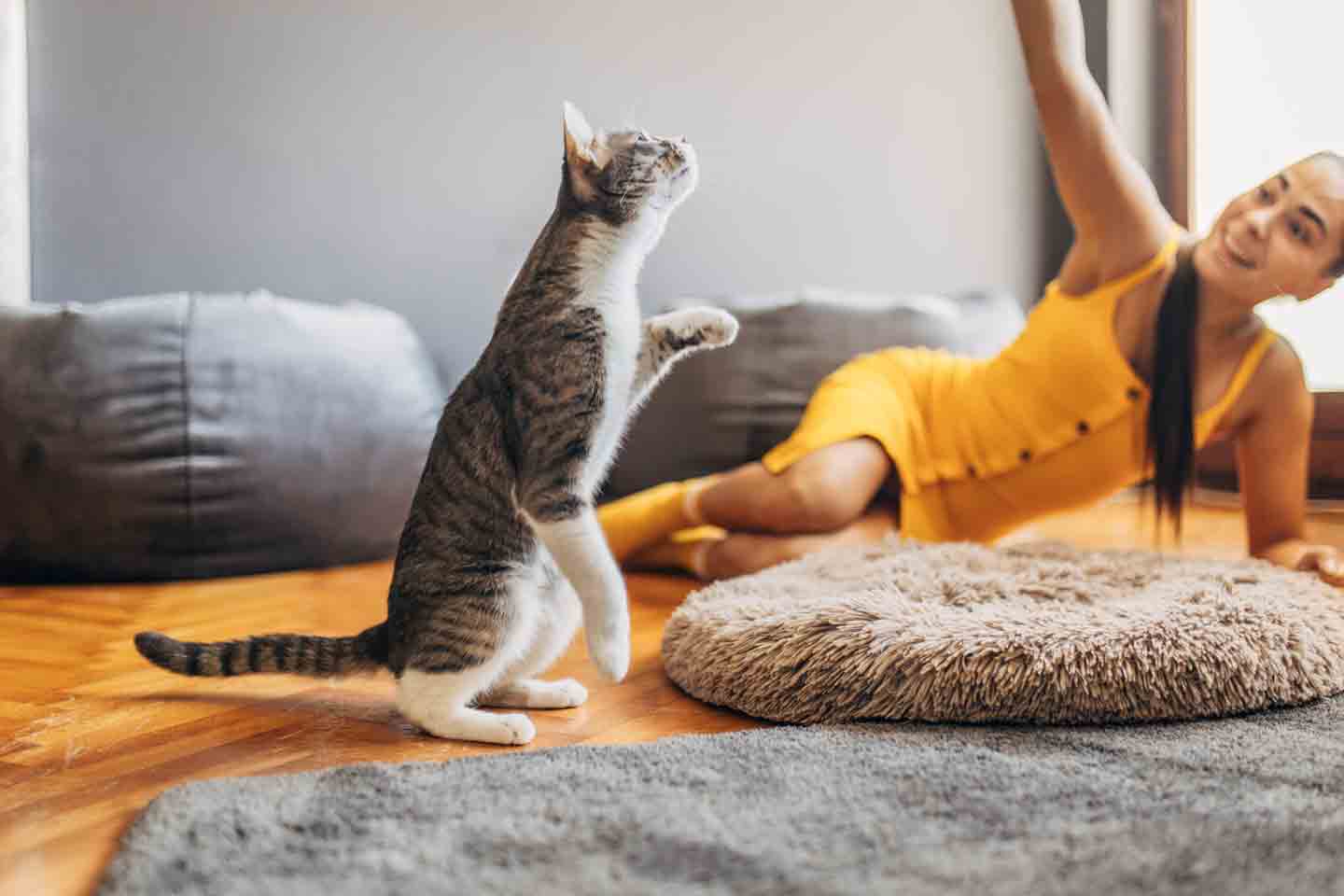
8Set Up a Routine for Playtime and Exercise Sessions
When you spot your furry friend’s eyes widening and tail flicking, playtime-mode has officially been activated. Some cats like playing more than others, but all can benefit from the mental and physical stimulation that comes from their favorite activities, whether it’s playing a game of hide-and-seek, attacking a wand toy or getting their steps in on a cat treadmill.
Depending on their breed, age and health, even just a few minutes of exercise or playtime a day can be beneficial to their overall wellness and strengthen your and your feline friend’s bond. Dr. de Wet says 5-15 minutes of play or exercise sessions around the same time every day works great.
Do Cats Need To Go Outside?
“Cats, while often seen enjoying the great outdoors, do not necessarily need to venture outside to be happy and healthy,” Dr. Kong says.
Dr. de Wet echoes these sentiments, saying there’s a general belief that cats need to have outside time for enrichment. However, she points out, we can make an extraordinary effort to bring the outdoors in, like with cat-safe indoor plants, for example.
Although some evidence suggests that outdoor cats are less prone to behavioral issues and chronic diseases, Dr. de Wet says behavioral issues can often be addressed with adequate enrichment and making sure there are enough appropriate resources (litter boxes, food and water bowls, etc) for multi-cat households.
She adds that the issue of chronic disease in indoor cats likely results from both obesity—another factor we can control—and the fact that indoor cats live much longer (and thus have more time to develop a chronic disease) because they’re safer.
Benefits of Keeping Your Cat in the House
Though life might seem more fascinating for a cat outside, it’s ultimately a lot safer for our feline friends to be inside and, preferably, by our side.
Benefits of keeping your cat indoors include protection from common outdoor hazards, such as:
- Predators (e.g., other cats, wild animals, dogs)
- Fleas and ticks
- Infectious diseases (e.g., FeLV, rabies, feline panleukopenia)
- Extreme-weather health issues (e.g., heat exhaustion, heatstroke, hypothermia, frostbite)
- Toxins (e.g., toxic plants, pesticides)
- Traffic-related injuries
“This controlled environment can also contribute to a longer lifespan, offering more years of companionship for pet parents,” Dr. Kong says. Plus, the chance of your cat getting lost is much lower compared to if they spend time outside.
Dr. de Wet adds that, while it’s easiest to start a kitten off indoors, you can also transition outdoor cats to indoors with a lot of patience.
How to Transition an Outdoor Cat to an Indoor Cat
No matter whether your kitty is currently an outdoor cat or an indoor/outdoor cat, it is possible to help them adjust to living life completely indoors.
Dr. Kong says transitioning an outdoor cat to an indoor lifestyle requires a thoughtful and gradual approach. She offers pet parents the following tips:
- Begin by progressively reducing the time your cat spends outdoors.
- To compensate for the reduced outdoor exposure, enrich their indoor environment with items like scratching posts, toys and perches to keep them stimulated and active.
- Establish a consistent feeding, playing and cuddling routine to help your cat adapt to their new indoor life.
Dr. de Wet says that exactly how long it takes for a cat to adapt from a fully outdoor to fully indoor lifestyle can vary from cat to cat. This process can take anywhere from several weeks to months for them to settle in and not beg to go out, with some even attempting to escape outdoors.
“Outdoor cats can become very insistent about being let out, and some can go through a destructive period,” Dr. de Wet says. “You’ll have to work harder to keep them engaged at first and be very patient.”
How to Safely Let Your Indoor Cat Enjoy the Outdoors
Conversely, if you want to safely give your indoor cat a taste of the outdoor lifestyle, try these tips:
- Walk them on a leash. Dr. Kong says leash training a cat allows for controlled and supervised outdoor exploration.
- Create a safe outdoor space using an enclosed catio.
- Set up window perches, so they can observe the outdoors.
Dr. Kong says it’s important to avoid making sudden changes in your cat’s routine and access to the outdoors, as this can cause stress and anxiety. “Each cat is an individual, and their preferences should guide how they’re introduced to and interact with their environment, indoors or outdoors,” she says.
The bottom line: There are many ways to keep your indoor kitty happy and healthy. By offering lots of opportunities for physical activity and mental stimulation, ensuring they’re healthy with routine cat care, and providing a clean, comfortable space, your cat can enjoy a long, happy life—all from the comforts of your home.
Looking for tips on managing your indoor cat’s hair? Check out our guide to a fur-free home.
Expert input provided by Dr. Sabrina Kong, DVM, Certified Canine Rehabilitation Practitioner at Jules Veterinary Center in Tracy, California, and veterinary consultant at WeLoveDoodles.com; Dr. Sara de Wet, DVM, associate veterinarian at Scott’s Addition Animal Hospital in Richmond, Virginia; Dr. Michelle Dulake, DVM, CEO of Fera Pet Organics in Los Angeles and associate veterinarian at Veterinary Medical Center in Studio City, California.
MORE ON KEEPING CATS HAPPY AND HEALTHY
Share:
